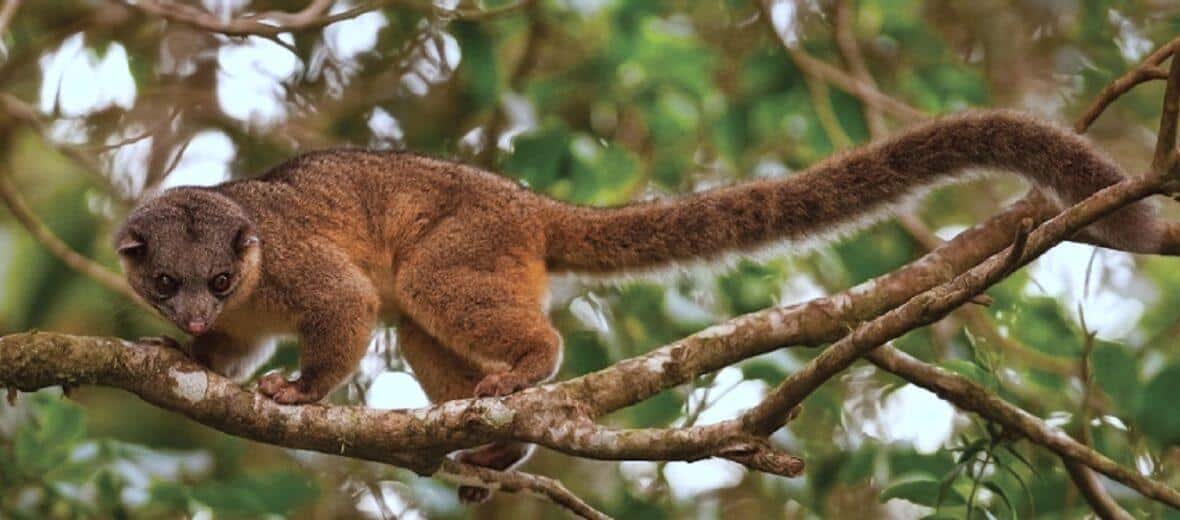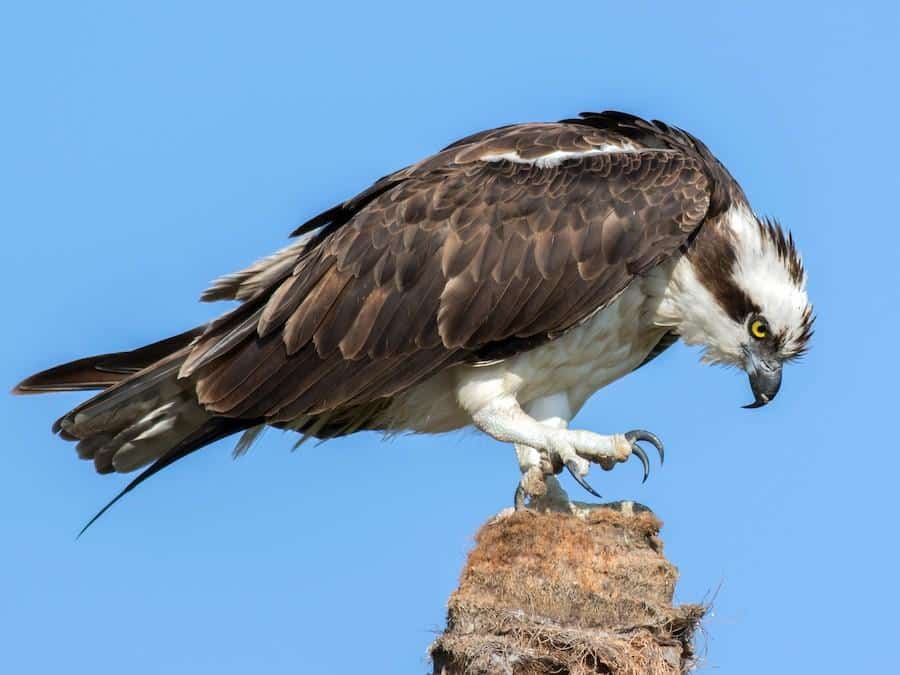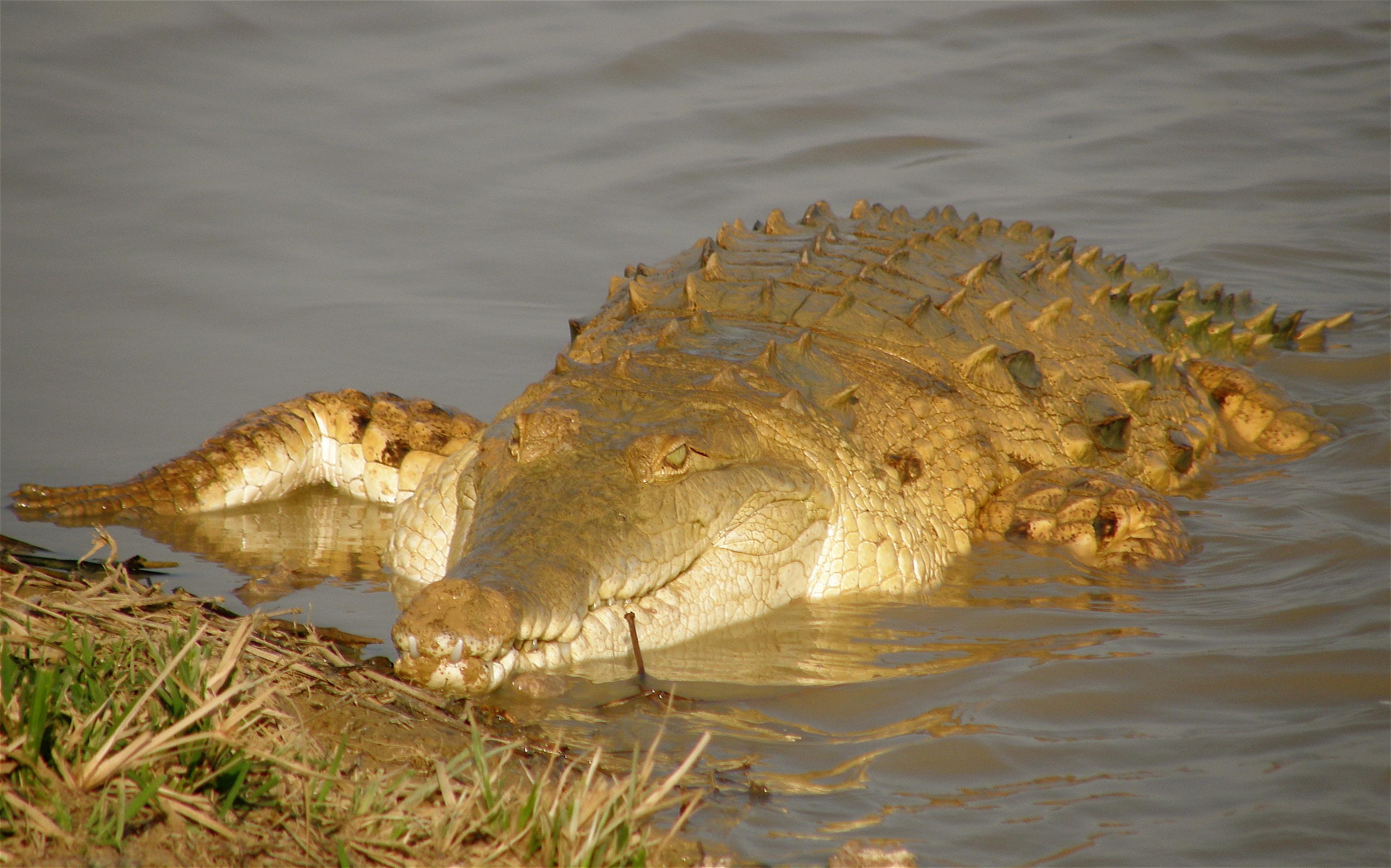Ready to dig into the fascinating animal world that starts with “O”? You might already know about owls and orangutans, but there are so many more to discover!
Our planet has incredible creatures, from the small opossum to the mighty oryx.
Tracking them all can be challenging, especially with so many cool animals. That’s where this guide comes in handy!
Join us as we explore 46 amazing creatures that start with “O.” You’ll be impressed by their vibrant colors, unique features, and cool facts.
Let’s take a fun journey to uncover the diverse world of these incredible animals!
We’ve got a great lineup of 46 creatures, from the familiar to the lesser-known, each with special characteristics.
Diversified World of Animals Starting with ‘O’
In the following segment, we have detailed these creatures and interesting facts about them.
1. Ostrich
The ostrich is the largest living bird, known for its impressive size and distinctive long neck and legs. These flightless birds are well-adapted to their arid habitats and can go without water for extended periods.
- Place of Origin: Africa
- Regions of Habitat: Savannas and semi-deserts of Africa
- Scientific Name: Struthio camelus
Interesting Facts: Despite their massive size, ostriches can sprint up to 43 mph (70 km/h). Their powerful legs can deliver deadly kicks to potential predators with a powerful force to kill a lion.
2. Ocelot
The ocelot is a sleek and beautiful wild cat known for its spotted coat and elongated body. These felines are skilled climbers and excellent swimmers, enabling them to navigate their diverse habitats easily.
- Place of Origin: Southwest United States, Mexico, Central and South America
- Regions of Habitat: Tropical and subtropical forests, savannas, and brushlands
- Scientific Name: Leopardus pardalis
InterestingFacts: Ocelots can rotate their rear feet 180 degrees to climb down trees head-first. Their night vision and exceptional hunting abilities make them formidable predators in their environment.
3. Opossum
Opossums are marsupials with a distinctive pointed snout, prehensile tail, and the ability to “play dead” when threatened. These adaptable creatures are found throughout the Americas, from dense forests to urban neighborhoods.
- Place of Origin: North and South America
- Regions of Habitat: Various habitats, including forests, grasslands, and urban areas
- Scientific Name: Didelphis
InterestingFacts: Opossums are immune to the venom of many snakes, including rattlesnakes, due to their natural resistance. They are also known for their remarkable capacity to resist certain diseases, including some forms of cancer.
4. Orangutan
The orangutan is a highly intelligent great ape species known for its distinctive reddish-brown fur and remarkable skill. These gentle giants spend most of their lives in the trees, swinging from branch to branch with ease.
- Place of Origin: Indonesia and Malaysia
- Regions of Habitat: Rainforests of Sumatra and Borneo
- Scientific Name: Pongo
Interesting Facts: Orangutans are among the most intelligent primates, capable of using tools and building shelters. They are also remarkably strong, with adult males capable of breaking branches as thick as a human wrist.
5. Oryx
The oryx is a large antelope species known for its striking appearance, with long, straight horns and a distinctive black mask. These desert-dwelling animals are well-adapted to arid environments and can go for extended periods without water.
- Place of Origin: Africa and the Arabian Peninsula
- Regions of Habitat: Deserts and semi-arid regions
- Scientific Name: Oryx
InterestingFacts: Oryx can detect moisture from long distances, allowing them to find scarce water sources in the desert. Their horns are highly valued in some cultures, leading to conservation efforts to protect these remarkable creatures.
6. Oriole
Orioles are vibrant, small-to-medium-sized songbirds known for their striking plumage and distinctive hanging nests. These melodious birds are found across various continents, adding a touch of color and music to their surroundings.
- Place of Origin: Various regions worldwide
- Regions of Habitat: Forests, woodlands, and urban areas
- Scientific Name: Icterus
InterestingFacts: Many oriole species are skilled at weaving intricate, pouch-like nests that hang from tree branches. Their bright colors and melodious songs make them beloved backyard visitors in many parts of the world.
7. Otter
Otters are playful, semi-aquatic mammals known for their sleek bodies, dense fur, and agility in the water. These social creatures are found in various aquatic habitats, from rivers and lakes to coastal areas.
- Place of Origin: Various regions worldwide
- Regions of Habitat: Freshwater and marine environments
- Scientific Name: Lutrinae
InterestingFacts: Otters have incredible swimming abilities and can remain underwater for up to 8 minutes. They use tools like rocks to dislodge prey and are highly intelligent and curious animals.
8. Owl
Owls are nocturnal birds of prey known for their distinctive hooting calls, silent flight, and exceptional night vision. These feathered hunters come in a wide variety of sizes and colors, occupying diverse habitats across the globe.
- Place of Origin: Various regions worldwide
- Regions of Habitat: Forests, grasslands, deserts, and urban areas
- Scientific Name: Strigiformes
InterestingFacts: Owls have incredibly sharp eyesight and can rotate their heads nearly 360 degrees to scan their surroundings. Their soft, fluffy feathers allow for silent flight, making them formidable hunters in the night.
9. Oxpecker
Oxpeckers are small, stocky birds known for their symbiotic relationship with large mammals like buffalo and rhinos. These unique birds feed on ticks, flies, and other parasites found on the skin of their mammalian hosts.
- Place of Origin: Africa
- Regions of Habitat: Savannas and grasslands of sub-Saharan Africa
- Scientific Name: Buphagus
InterestingFacts: Oxpeckers have special adaptations, like sharp beaks and sturdy feet, to cling to the skin of their hosts. Their presence benefits birds and mammals, creating a mutually beneficial relationship.
10. Oyster Toadfish
The oyster toadfish is a peculiar-looking fish species known for its ability to produce loud grunting sounds. These bottom-dwelling creatures are well-camouflaged and often reside in oyster beds or other underwater structures.
- Place of Origin: Western Atlantic Ocean
- Regions of Habitat: Coastal waters along the eastern coast of North America
- Scientific Name: Opsanus tau
InterestingFacts: Oyster toadfish can ” sing” by vibrating their swim bladders, producing a distinctive grunting sound. They are also known for their exceptional parental care, with males guarding and aerating their eggs.
11. Okapi
The okapi is a unique giraffe-like animal with a velvety reddish-brown coat and striped legs, resembling a blend of a zebra and a giraffe. These elusive
creatures are found in the lush rainforests of the Democratic Republic of the Congo.
- Place of Origin: Democratic Republic of the Congo
- Regions of Habitat: Dense rainforests of central Africa
- Scientific Name: Okapia johnstoni
Interesting Facts: The okapi’s distinct leg stripes serve as camouflage in the dense rainforest undergrowth. They are closely related to the giraffe but prefer to live a more solitary life in the forest understory.
12. Olingo
The olingo is a raccoon-like mammal with a long, furry tail and sharp claws perfect for climbing trees in its forest habitat. These agile creatures are found in the lush forests of Central and South America.
- Place of Origin: Central and South America
- Regions of Habitat: Tropical and subtropical forests
- Scientific Name: Bassaricyon gabbii
InterestingFacts: Olingos are excellent climbers and can rotate their hind feet 180 degrees to descend trees head-first. They are primarily nocturnal and are known for their distinctive, high-pitched calls.
13. Olive Ridley Sea Turtle
The olive ridley sea turtle is a medium-sized marine turtle known for its distinct olive-green carapace and annual mass nesting events. These turtles are found in warm coastal waters and participate in synchronized nesting called “arribadas.”
- Place of Origin: Tropical and subtropical regions worldwide
- Regions of Habitat: Warm coastal waters and beaches
- Scientific Name: Lepidochelys olivacea
InterestingFacts: Olive ridley sea turtles are known for their synchronized mass nesting events, where thousands gather on the same beach. They are one of the most abundant sea turtle species but still face threats from human activities.
14. Olm
The olm is a rare aquatic salamander species known for its pale, pinkish skin and unusual adaptations to life in complete darkness. These unique creatures are found in the underground waters of the Dinaric Alps region.
- Place of Origin: Southeastern Europe
- Regions of Habitat: Underwater caves and underground waterways
- Scientific Name: Proteus anguinus
InterestingFacts: Olms are highly adapted to their underground environment, with specialized senses and the ability to survive for years without food. They are considered “living fossils” and have remained virtually unchanged for millions of years.
15. Orca (Killer Whale)
The orca, also known as the killer whale, is a highly intelligent and social marine mammal known for its distinctive black-and-white coloration. These apex predators are found in oceans worldwide and often travel in close-knit family groups.
- Place of Origin: Various oceans worldwide
- Regions of Habitat: Open oceans and coastal waters
- Scientific Name: Orcinus orca
InterestingFacts: Orcas are highly intelligent and have complex social structures and communication systems. Despite their name, they are not whales but the largest dolphin family members.
16. Otter Shrew
The otter shrew is a small, semi-aquatic mammal known for its sleek, otter-like appearance and unique adaptations for an aquatic lifestyle. These curious creatures are found in the freshwater habitats of Southeast Asia.
- Place of Origin: Southeast Asia
- Regions of Habitat: Freshwater habitats, such as streams and rivers
- Scientific Name: Nectogale
Interesting Facts: Otter shrews have dense, waterproof fur and webbed feet, allowing them to swim and dive with ease. They are among the few mammals using their venom to subdue prey.
17. Ovenbird
The ovenbird is a small, migratory songbird known for its distinctive nest-building behavior and striking orange crown. During the breeding season, these ground-dwelling birds are found in the forests of North and Central America.
- Place of Origin: North and Central America
- Regions of Habitat: Deciduous and mixed forests
- Scientific Name: Seiurus aurocapilla
InterestingFacts: Ovenbirds construct domed, oven-like nests on the forest floor made of leaves, grasses, and other plant materials. Their loud, ringing song is familiar in many forests during the spring and summer months.
18. Oystercatcher
The oystercatcher is a distinctive shorebird known for its striking black-and-white plumage and bright orange-red bill. These birds are found along the coasts of many continents, where they feed on mollusks and other marine invertebrates.
- Place of Origin: Various coastal regions worldwide
- Regions of Habitat: Shorelines, estuaries, and coastal areas
- Scientific Name: Haematopus
Interesting Facts: Oystercatchers use their sturdy bills to pry open shellfish and feed on them, such as oysters and mussels. They are highly territorial during the breeding season and aggressively defend their nesting areas.
19. Osprey
The osprey is a large, fish-eating bird of prey known for its unique adaptations for catching fish in water. These raptors are found near bodies of water worldwide, hunting for their aquatic prey.
- Place of Origin: Various regions worldwide
- Regions of Habitat: Coastal areas, lakes, and rivers
- Scientific Name: Pandion haliaetus
Interesting Facts: Ospreys have specialized reversible outer toes that allow them to grasp fish more efficiently. They are also known for their unique fishing behavior, diving feet-first into the water to catch their prey.
20. Oncilla
The oncilla is a small, nocturnal wild cat species known for its distinctive spotted coat and reclusive behavior. These elusive felines are found in the dense forests of Central and South America.
- Place of Origin: Central and South America
- Regions of Habitat: Tropical and subtropical forests
- Scientific Name: Leopardus tigrinus
Interesting Facts: Oncillas are solitary and highly arboreal, spending much of their time in the trees hunting for prey. They are one of the smallest cat species in the Americas and are highly elusive in their natural habitats.
21. Opossum Mouse
The opossum mouse is a small, mouse-like marsupial found in the forests of South America. These tiny creatures are skilled climbers and scavengers, often seen foraging in the forest’s understory.
- Place of Origin: South America
- Regions of Habitat: Tropical and subtropical forests
- Scientific Name: Thylamys
Interesting Facts: Despite their name, opossum mice are not closely related to true mice but are marsupials like kangaroos. They have a prehensile tail that aids in climbing and can enter a state of torpor to conserve energy.
22. Orb-weaver Spider
The orb-weaver spider is a family of skilled web weavers known for their intricate, spiral-shaped webs. These spiders come in various colors and patterns and can be found in many habitats worldwide.
- Place of Origin: Various regions worldwide
- Regions of Habitat: Forests, grasslands, and even urban areas
- Scientific Name: Araneidae
Interesting Facts: Orb-weaver spiders construct their iconic spiral webs with incredible precision and efficiency. Some species can spin webs over 1 meter in diameter, using silk stronger than steel.
23. Oribi
The oribi is a small, graceful antelope species known for its reddish-brown coat and distinctive black facial markings. These shy creatures are found in Africa’s open grasslands and savannas.
- Place of Origin: Africa
- Regions of Habitat: Savannas and grasslands of sub-Saharan Africa
- Scientific Name: Ourebia ourebi
Interesting Facts: Oribis are skilled at camouflaging themselves in their natural habitats, lying motionless to avoid detection by predators. They are also known for their ability to make incredible leaps, sometimes clearing heights of up to 2 meters.
24. Orinoco Crocodile
The Orinoco crocodile is a critically endangered crocodilian species found in the freshwater habitats of South America. These powerful reptiles are known for their distinctive long, slender snouts and ability to adapt to changing environments.
- Place of Origin: South America
- Regions of Habitat: Freshwater habitats in Venezuela and Colombia
- Scientific Name: Crocodylus intermedius
Interesting Facts: Orinoco crocodiles are among the largest predators in their habitat, capable of taking down large prey. They are also skilled at regulating their body temperature, allowing them to survive in warm and cool waters.
25. Ounce (Snow Leopard)
The ounce, or snow leopard, is a magnificent big cat species known for its thick, pale fur and exceptional camouflage in snowy environments. These elusive felines are found in Central and South Asia’s remote, rugged mountain ranges.
- Place of Origin: Central and South Asia
- Regions of Habitat: Mountainous regions of Central Asia
- Scientific Name: Panthera uncia
Interesting Facts: Snow leopards have exceptional adaptations for their harsh mountain habitats, including large nasal cavities and thick fur on their paws. They are considered one of the most elusive and mysterious big cats, making studying in the wild difficult.
26. Ouakari
The ouakari is a distinctive primate species known for its bald, red face and long, shaggy coat. It is found in the Amazon rainforests of South America, where it lives in small social groups.
- Place of Origin: South America
- Regions of Habitat: Rainforests of Brazil, Colombia, and Peru
- Scientific Name: Cacajao
Interesting Facts: Ouakaris have a unique adaptation called “sexual skin,” where the male’s face and body turn bright red during the breeding season. They are skilled seed predators crucial in dispersing seeds throughout the rainforest.
27. Ouk
The ouk, the Cambodian forest ox or kouprey, is a critically endangered bovine species in Southeast Asian forests. These elusive creatures are known for their distinctive horns and greyish-brown coats.
- Place of Origin: Southeast Asia
- Regions of Habitat: Forests of Cambodia, Laos, and Vietnam
- Scientific Name: Bos sauveli
Interesting Facts: The ouk is one of the rarest and most threatened large mammal species worldwide, with fewer than 100 individuals remaining in the wild. Their population has declined due to habitat loss, hunting, and competition with domestic cattle.
28. Oven Toad
The oven toad is a unique amphibian species known for its bright colors and ability to construct small, oven-like chambers in the ground. These tiny toads live most of their lives underground in the forests and grasslands of South America.
- Place of Origin: South America
- Regions of Habitat: Forests and grasslands of South America
- Scientific Name: Brachycephalus
Interesting Facts: Oven toads construct small, domed chambers in the soil, using their flat heads as shovels. They are known for their remarkable breeding strategy, where the female lays eggs directly on the male’s back.
29. Oviraptor
The oviraptor was a unique theropod dinosaur known for its distinctive beak-like snout and feathered body. These dinosaurs lived during the Late Cretaceous period and are known from fossil remains found in Asia.
- Place of Origin: Asia (Fossil)
- Regions of Habitat: N/A (Extinct)
- Scientific Name: Oviraptor
Interesting Facts: Despite its name, which means “egg thief,” the oviraptor was likely a caring parent, protecting its eggs and young. Fossilized oviraptor nests have been found with the adult dinosaur positioned as if brooding over the eggs.
30. Oilbird
The oilbird is a nocturnal bird, unique for its reliance on echolocation to navigate through dark caves where it resides during the day. These birds are native to the dense rainforests of northern South America.
- Place of Origin: Northern South America
- Regions of Habitat: Tropical rainforests, especially in caves
- Scientific Name: Steatornis caripensis
Interesting Facts: Oilbirds are the only known flying birds that use echolocation, similar to bats, to orient themselves in complete darkness. Their diet primarily consists of fruits, especially those of the oil palm, which gives them their name. The oil extracted from the young birds was historically used for lighting lamps, contributing to their name.
31. Oregon Silverspot Butterfly
The Oregon silverspot butterfly is a colorful and rare species on the United States Pacific coast.
- Place of Origin: Pacific Northwest, USA
- Regions of Habitat: Coastal grasslands
- Scientific Name: Speyeria zerene hippolyta
Interesting Facts: This butterfly is threatened by habitat loss and the decline of its primary food source, the early blue violet. Conservation efforts are focused on habitat restoration and captive breeding programs.
32. Ozark Hellbender
The Ozark hellbender is a large, aquatic salamander species found in the rivers and streams of Missouri and Arkansas. These unique amphibians are known for their distinctive flat bodies and wrinkled skin.
- Place of Origin: North America
- Regions of Habitat: Rivers and streams in Missouri and Arkansas
- Scientific Name: Cryptobranchus alleganiensis bishop
Interesting Facts: Ozark hellbenders are one of the largest salamander species in the world, growing up to 2 feet in length. They are among the longest-lived amphibians, with lifespans of up to 30 years or more.
33. Ocellated Icefish
The ocellated icefish is notable for its clear blood, which lacks hemoglobin and is found in the cold waters of Antarctica.
- Place of Origin: Southern Ocean, Antarctica
- Regions of Habitat: Deep sea environments
- Scientific Name: Chionodraco rastrospinosus
Interesting Facts: The ocellated icefish survives without hemoglobin by having highly oxygen-efficient bodily functions and a large heart that circulates its clear plasma more effectively than other fish. Its blood is transparent due to the absence of red blood cells.
34. Owl Butterfly
The owl butterfly is a striking species known for its large size and distinctive eye-like markings on its wings. These beautiful insects are found in the tropical rainforests of the Americas, where they mimic the appearance of owls.
- Place of Origin: Tropical regions of the Americas
- Regions of Habitat: Rainforests and tropical forests
- Scientific Name: Caligo
Interesting Facts: The owl butterfly’s eye-like markings are believed to help deter predators by startling or confusing them. They are also known for their unique courtship behavior, where males gather in groups to attract females.
35. Oribatid Mite
The oribatid mite is a small, hard-bodied arachnid crucial for soil health and nutrient cycling. It is found globally and thrives in diverse environments, from tropical rainforests to arid deserts.
- Place of Origin: Worldwide
- Regions of Habitat: Soil, leaf litter, tree bark, and other decomposing materials
- Scientific Name: Oribatida
Interesting Facts: Oribatid mites have an extraordinarily long lifespan for their size, with some species living up to several years. They are vital in breaking down dead organic matter and enriching the soil. Additionally, their bodies can contain a variety of symbiotic fungi and bacteria, which contribute to their ability to decompose tough plant and fungal materials.
36. Okinawa Rail
The Okinawa rail is a flightless bird endemic to the island of Okinawa in Japan.
- Place of Origin: Okinawa, Japan
- Regions of Habitat: Dense forests and wetlands
- Scientific Name: Gallirallus okinawae
Interesting Facts: The Okinawa rail is critically endangered due to its limited range and predation by invasive species such as the mongoose. It is known for its loud, distinctive calls and striking plumage.
37. Olive Tree Warbler
The Olive Tree Warbler is a small bird species predominantly found in the Mediterranean.
- Place of Origin: Mediterranean Basin
- Regions of Habitat: Olive groves and open woodlands
- Scientific Name: Hippolais olivetorum
Interesting Facts: The Olive Tree Warbler is known for its distinctive olive-green plumage, which provides excellent camouflage in its habitat. It migrates to sub-Saharan Africa during the winter and is noted for its melodious song, a complex sequence of trills and whistles.
38. Ocellated Turkey
The ocellated turkey is a striking bird known for its vibrant, iridescent plumage and distinctive eye-shaped ocelli on its tail feathers. These birds are native to the tropical forests of the Yucatán Peninsula and surrounding areas.
- Place of Origin: Central America
- Regions of Habitat: Tropical forests of the Yucatán Peninsula, parts of Belize and Guatemala
- Scientific Name: Meleagris ocellata
Interesting Facts: Unlike their North American cousins, ocellated turkeys are much more colorful, with feathers that shimmer in shades of green, blue, and gold. They are also known for their unique, high-pitched gobbles during the mating season. Their diet includes a variety of forest floor fruits, seeds, and insects.
39. Ochre Sea Star
The ochre sea star is a colorful starfish commonly found along the Pacific coast, from Alaska to California. These sea stars are vital predators in their ecosystems, primarily inhabiting rocky shores and tidal pools.
- Place of Origin: Pacific Coast of North America
- Regions of Habitat: Rocky shores and tidal pools
- Scientific Name: Pisaster ochraceus
Interesting Facts: Ochre sea stars can regenerate lost arms, a crucial survival strategy after injury. They are known for maintaining the ecological balance of intertidal zones by preying on mussels and other shellfish, which helps prevent these populations from overcrowding their habitats.
40. Oarfish
The oarfish is a rarely seen deep-sea fish known for its elongated, ribbon-like body and shimmering silver appearance. It is one of the longest bony fishes alive today, typically inhabiting the mid to lower levels of the ocean.
- Place of Origin: Worldwide oceanic waters
- Regions of Habitat: Deep-sea environments, typically at depths from 200 meters to 1,000 meters
- Scientific Name: Regalecus glesne
Interesting Facts: Oarfish are known to reach lengths of up to 36 feet (11 meters), making them the longest of all bony fishes. They are often considered sea serpents when people see them due to their size and unusual appearance. Oarfish are believed to be the origin of many sea monster myths throughout history.
41. Ocellated Lizard
The ocellated lizard is a large and vividly colored species known for its eye-like spots (ocelli) on its back.
- Place of Origin: Western Mediterranean
- Region Regions of Habitat: Arid, rocky areas with sparse vegetation
- Scientific Name: Timon lepidus
Interesting Facts: Ocellated lizards are one of the largest species of lizards in Europe. To attract mates, they can exhibit bright green and blue colors during the breeding season, especially the males.
42. Olinguito
The olinguito is a recently discovered member of the raccoon family. It is native to the cloud forests of the Andes in South America.
- Place of Origin: Colombia and Ecuador
- Regions of Habitat: Montane cloud forests
- Scientific Name: Bassaricyon neblina
Interesting Facts: Olinguitos are extremely shy and nocturnal. They were only identified as a new species in 2013, making them the first new carnivorous mammal described in the Western Hemisphere in over 35 years.
43. Oriental Small-clawed Otter
The Oriental small-clawed otter is the smallest otter species in the world and is known for its high social behavior and skill.
- Place of Origin: South and Southeast Asia
- Regions of Habitat: Freshwater river systems, mangroves, and wetlands
- Scientific Name: Aonyx cinerea
Interesting Facts: These otters use their small claws less for digging and more for food handling, making them unique among otter species.
44. Oil Beetle
Oil beetles are a type of blister beetle known for their defensive secretion of a toxic chemical called cantharidin.
- Place of Origin: Worldwide
- Regions of Habitat: Grasslands, meadows, along woodland paths
- Scientific Name: Meloe
Interesting Facts: When threatened, oil beetles can secrete cantharidin from their joints to deter predators. This substance can cause blistering on human skin.
45. Orchid Mantis
The orchid mantis is famous for its striking resemblance to orchids, using its appearance to attract prey and blend into floral environments.
- Place of Origin: Southeast Asia
- Regions of Habitat: Tropical rainforests
- Scientific Name: Hymenopus coronatus
Interesting Facts: The orchid mantis is one of the few creatures that can mimic flowers to lure its prey, typically pollinating insects.
46. Oxeye Tarpon
The oxeye tarpon is a lesser-known tarpon species that is smaller than its Atlantic counterpart but equally vigorous.
- Place of Origin: Indo-Pacific regions
- Regions of Habitat: Estuaries, rivers, and coastal waters
- Scientific Name: Megalops cyprinoides
Interesting Facts: Oxeye tarpons are known for their spectacular jumps and are sought after by sport fishermen for their fighting ability when hooked.
Conclusion
The incredible world of animals is filled with diverse creatures, and those starting with the letter “O” are no exception.
From the tiny opossum to the oarfish, these 46 fascinating animals showcase our planet’s remarkable variety of life.
Each species has unique adaptations, behaviors, and roles in the delicate balance of ecosystems.
By learning more about these animals, we gain a deeper appreciation for preserving our environment and the life it supports.
So the next time you explore nature, consider the wondrous animals that call it home and what steps you can take to help protect them for future generations.
Together, we can make a difference in ensuring a thriving future for all life on Earth.






















































